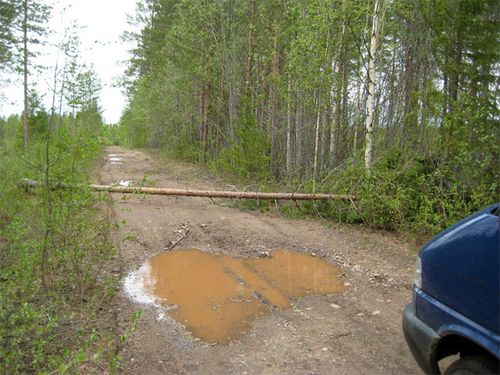Somebody finally asked me why we do this. What do we gain after tromping through the Finnish woods all day, or after finding a few flakes of quartz stone from 5000 years ago? Would it matter if we didn’t do it? In the short term, the answer is easy. Everything we do and everything we find (and don't find) gets put on maps and written about in reports that are sent to the Finnish National Board of Antiquities. They keep these maps and reports so that anyone can read them in the future.
Next, the graduate students and professors I am here with write articles about the sites and publish them in scientific journals that are read mostly by other archaeologists. This lets other archaeologists know what we're doing, and also helps the graduate students earn their Ph.D.s and the professors keep their jobs and obtain grant money in the future.
Fortunately there's more to it than just that! Those articles get discussed by other archaeologists, historians, and scientists. They get compared to what we already know about Finnish prehistory from other years and also to what we know about other similar places in the world: Canada, Russia, etc.
Gradually a consensus emerges about how these 5000 - year old people experienced life in the North, and how their experience changed as sea level and climate changed.
It is instructive at this point to remember that we live in a time when sea level and climate are changing more rapidly than ever before before in human history.
It appears that 5000 years ago the people we are studying (I'll call them the Kierikki People for lack of a better name) were living in tidy and well-build row houses. Some of them were a lot bigger than my house! Their communities were quite large, stable and prosperous for hunter-gatherers. They could afford to trade for amber from the south, and exotic stone from the east. They built big "Giant’s Churches” out of rocks. They must have been immensely pleased with themselves.
After that time (~4000 years ago) there were still people here but living in smaller, more scattered settlements in smaller, less organized houses. Something in their environment had changed.
It's a sobering thought for people like me (and most of our political leaders) who were brought up on the idea of continuous human progress: Successful societies can revert to simpler ways in response to environmental changes like sea level or climate.
Who's paying the bill for this work? We all are. This project is funded by the National Science Foundation of the United States, the European Science Foundation, and the Finnish National Academy of Sciences. Ultimately, it's taxpayer dollars and euros from two continents. Your elected representatives have decided that we might have something to learn from the experience of 5000 year old hunter-gatherers. After seeing the evidence first hand (5000 year old house foundations the size of a 747 jet plane, nothing comparable from 4000 years ago) I have to agree with them.
This is my last post from Finland.
Yours always, Michael Wing



Comments